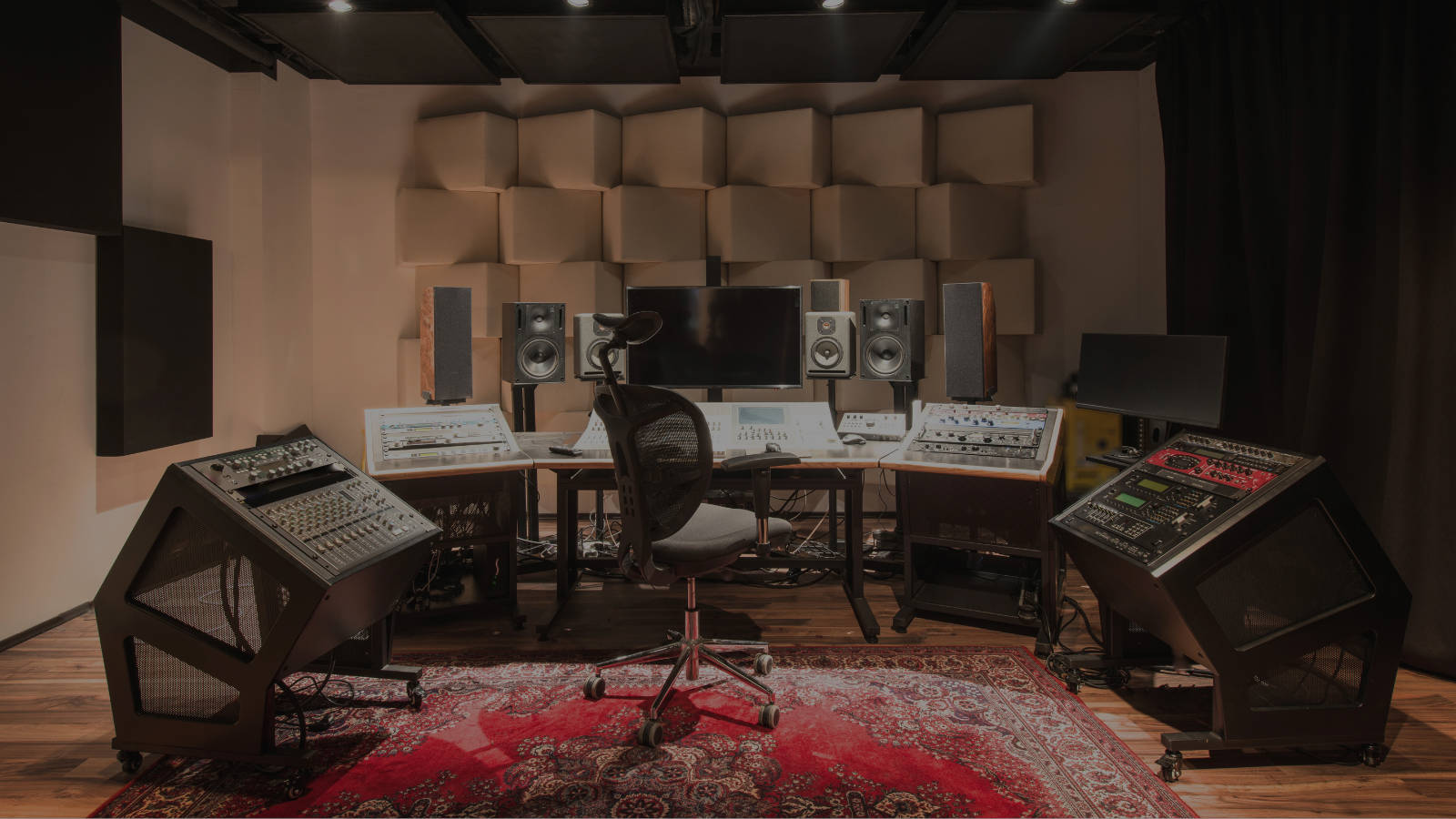Everything You'd Ever Want to Know About Earplugs Made Simple
Remember how tan everyone was in the 80’s and 90’s? Back then, our idea of sunscreen use was limited to tanning oil and everyone was out on the beach roasting into a dark, leathery brown. There just wasn’t an understanding of the cumulative effects of sun damage or the idea of daily preventative use of sunscreen. Now, we of course understand how harmful this was and how rapidly it ages you.

Sunscreen is to the 80s & 90’s what earplugs are to today. Most of us don’t think about earplugs or understand why you would need to use them. Unless you’ve worked in a job that required them or you have already experienced hearing damage, earplugs just aren’t a commonly used item.
While earplugs are a common solution for blocking out unwanted noise and protecting your ears in various environments, the idea of preventing damage with consistent use is still not prevalent.
In this blog post, we will delve into the science behind earplugs' effectiveness, explore the different types of earplugs available in the market and discuss the common questions that come up with earplug use. Whether you use earplugs for sleeping, attending concerts, or working in a noisy environment, understanding the science behind their effectiveness can help you make informed decisions and pick out the best protection for your ears.
“Over 1 billion young adults are at risk of permanent, avoidable hearing loss due to unsafe listening practices.”
How Your Hearing Actually Works
To understand what earplugs are best suited for you, it’s important to understand what they aim to protect. Our hearing is the result of a series of finely tuned, complex steps in the ear that turns sound waves into electrical signals that our brain translates to meaningful sound.
First, sound waves are captured by the outer ear and travel through the narrow passageway of the ear canal. When that narrow channel of sound reaches the eardrum, it vibrates. The vibrations go to three tiny bones in the middle ear: the malleus, the incus and the stapes. The vibrations are amplified and then sent to the cochlea, a fluid-filled snail-shaped structure in the inner ear. Through the cochlea, there's an elastic membrane, called the basilar membrane that acts like a floor for the vibrations. Those amplified vibrations cause the fluid inside the cochlea to ripple and a traveling wave forms. Hair cells are sensory cells sitting on top of the basilar membrane, ride this wave.
Hair cells near the wide end of the snail-shaped cochlea detect higher-pitched sounds and hair cells closer to the center detect lower-pitched sounds.
As the hair cells move, the tips of the cells project microscopic stereocilia and pore-like channels open at those tips. Once they open, chemicals rush into the cells, creating an electrical signal from the movement. This electrical signal travels along the auditory nerve to the brain, which turns experiences it as a sound that we recognize and understand.

Complex, right? If you got lost on the auditory journey, it’s fine. The important thing to understand is that your hearing is sensitive and once those hair cells are lost from damage, they cannot regenerate. Meaning, once your hearing is damaged, you cannot recover it.
Earplugs are Like Sunscreen
Hearing protection like earplugs are important for both the immediate effects of noise (the ringing ears or muting sound you might experience after a loud concert) and also the long-term effects that can build over time from your surroundings or too many concerts without protection. Over time, that small amount of damage can become a lot of damage and cause noise-induced hearing loss or tinnitus–both of which are permanent. Because of its cumulative effects, we often consider hearing loss as another aspect of aging, but similar to the cumulative effects of sun damage we can prevent that hearing loss with the use of earplugs.
Different Types of Earplugs
There are several different types of earplugs available on the market today. This allows you to find the earplugs that are right for your needs and price point.
What to Look For When Choosing Earplugs
There are several pieces of crucial information you will want to look at no matter the type of earplugs you are choosing. All of these are important for determining the best kind of earplugs for your situation. While earplugs come in a variety of types, they will either feature no filter or a variety of filter options. Ear plugs that block all sound will frequently be referred to as a “full block” filter or a “full block” earplug. If you’re wondering which ear plugs block the most noise or what are the best earplugs to cancel out noise, there are a few pieces of terminology that will be important to understand.
dB
Rating Decibels are the unit of sound measurement. The higher the number, the louder it is. The best earplugs for noise reduction are measured by measuring the reduction in decibels (dB).
Single Number Rating (SNR)
A system of measuring sound reduction per the International Organization for Standardization’s ISO 4869. To find the sound attenuation level, subtract the SNR from the decibel level.
Noise Reduction Rating (NRR)
A system of measuring sound reduction using OSHA ANSI/ASA S12.6-2016 standard.
To use subtract seven from the NRR number, divide by two and then subtract from the original decibel level.
Decibel Reduction Range
Earplugs attenuate high frequency tones differently than low frequency tones. The lower the frequency, the less the attenuation level. This is why labels may feature a range of reduction.
Comfort and Fit
In order for earplugs to reduce the sound to it's labeled SNR/NRR rating, you must wear them correctly. The correct way to wear earplugs is by inserting them according to the directions so that they create a complete seal in your ear canal. EARPEACE does this with a patented shape that reduces the amount of friction and pressure on your ear without breaking that seal. NIOSH recommends subtracting 50% of the NRR for traditional formable earplugs like wax or foam.
Durability and Reusability
Earplugs that can be reused must be monitored for any signs of wear and tear or need for cleaning. Remember, they only work as well as the seal and any dirt or wear will interfere with the earplugs ability to create a complete seal.
Do earplugs actually help at concerts?
Yes and no. Earplugs that are made of foam or wax, without filters, will reduce the sound and the noise. They are helpful for preventing damage but can be uncomfortable to wear and interfere with your experience. The best earplugs for concerts are earplugs that are silicone and fitted with high-fidelity filters. They will give you a much better music experience–not just from a comfortable fit but from the filters themselves that literally filter out the noise so all you hear is crisp, clear music. It sounds unbelievable until you try it!
Using Earplugs for ADHD, Autism and Sensory Processing Disorders like Misophonia
In the recent years, a rise in awareness about the needs of people with ADHD, Autism and Sensory Processing Disorders (SPD’s) has resulted in an increased awareness of how earplugs can help reduce sensory processing burdens. Wearing earplugs reduces the sensory input and increases the threshold at which people with sensory processing issues can operate, allowing for better coping mechanisms. The best earplugs for adhd are ones that are super comfortable and offer a variety of filter options so the user can tailor their sensory needs to a variety of situations.
Using Earplugs for Work or Studying
Even people who do not have a sensory processing disorder have found themselves to benefit from the use of earplugs in certain situations where they need to increase their ability to focus. The best noise canceling earplugs for work will be comfortable to wear, ideally reusable so they can be stored with your belongings and feature higher decibel reduction rating filters that lower as much noise as possible without blocking everything. These type of filters are ear plugs that allow you to hear conversation without getting distracted by ambient noise.
Using Earplugs for Sleeping
One of the primary ways people do think about earplugs is for sleeping–particularly if you’ve ever had to sleep next to someone who snores or have trouble falling asleep due to ambient noise. This can take a real toll on your health, going far beyond the damage to your hearing. The best earplugs for sleep are ones that are super comfortable for the wearer and block a high level of decibels in order to reduce the most amount of noise. The best noise canceling earplugs for sleeping usually feature a “full block” filter. This is what creates the result of noise canceling earplugs for sleeping.
Using Earplugs as a Musician
While many professional musicians you see at concerts or live venues use ear monitors called “in-ears” that allow them to hear their band music and sing along, there are a lot of other instances where musicians wear regular hearing protection. DJ’s, for example, are passionate about hearing protection as their regular exposure to higher decibels can shorten their careers and impact their ability to preform. Earplugs for drummers, DJ’s and other musicians are typically reusable and feature highly tuned acoustic filters like the ones featured in EARPEACE’s PRO line of music earplugs. Are musicians earplugs worth it? Well, if you love music and you want to experience music the way it was meant to be heard–then yes, absolutely.
How to Wear Earplugs Correctly
A correct fit is so important to earplugs–both for your comfort but also for your protection. You might wonder, does wearing earplugs damage your ears? If the earplugs are inserted incorrectly–to far or too tightly–then yes, it can cause damage. This is why it is so important to follow instructions and stop if you have any pain.
How High Fidelity Filters Work
There are two kinds of high fidelity filters, and both can offer good sound experiences. Choosing ones come down to what is right for your preferences.
Precision Drilled FiltersIn a precision drilled filter, a hole is bored through the filter that narrows the amount of sound that can make it to your eardrum. These are the kinds of filters featured in our Original line of products such as Music and Moto. Our Original Music and Moto, models come with 3 filter sets to make sure you are equipped for your specific situation:
- 20 dB - Red filters come preloaded in the plugs and are High Protection
- 17 dB - Clear filters are Medium Protection
In an acoustic filter, the sound goes through several layers, including an acoustic mesh membrane that captures the sound signature and replicates it completely, just at a lower volume. This allows for more precise, full spectrum sound. This technology is featured in our PRO line of products such as Music PRO, Moto PRO, and NPR. Our Music PRO and Moto PRO models come with different filter options and all filter options are available separately. This allows you to fully customize your sound experience.
Full Block Filter
A full block filter is one where the filter space is filled entirely, blocking the sound from making it’s way into the eardrum. This type of filter can’t completely eradicate any sound, but it will drastically reduce the sound you can hear. All our products have an available full block filter.
Remember that every 3dB increase is a doubling of sound pressure. The way that 'volume' increases is not linear. Even small increases are very tough on the delicate parts of your inner ear that pick up high frequencies and enable you to have a rich sound experience. A -3dB reduction may not feel like a big difference but it halves the amount of time you can safely listen to that level of sound. More information on Noise Induce Hearing Loss (NIHL) here.
Why are EARPEACE earplugs different?
In short? Our three patents. We are the only earplugs on the market with this many patents and this advanced of a product.

Our patents are both for utility and design–meaning we’ve created something no one has and no one else can replicate that improves the utility (use) of wearing earplugs and the design of how earplugs work. This technology we’ve developed advances the experience of wearing earplugs, ensuring you have the most comfortable wearing experience possible, while the filter options can be tailored to your situational needs.
Our mission is to meaningfully change the way people consider their hearing health and options to protect it. We want high quality hearing protection to be as common as sunscreen.
When we started in 2008, barely anyone talked about hearing protection. But we revolutionized the market with a discreet, comfortable, high-fidelity earplug built not only for musicians, but for all the fans at the event. We make audiologist recommended earplugs.
This same technology was customized for motorsports, and everyone that needed a good night’s sleep.
Festivals, motorcycle rallies, and events all over the world depend on EARPEACE to keep their stars and fans safe, comfortable, and ready for the next event. We are proud to be trusted by NPR Music, Red Bull, The House Institute, and Motorcycle.com.
Some Common Questions Answered (click on the title for a more in-depth look):
What kind of ear plugs work best for concerts?
High-fidelity earplugs are the best choice for concerts as they reduce decibel levels without obscuring the sound.
How many dB should earplugs be for concerts?
This depends on how loud the concert is or how close to the stacks your seats are. The NRR rating on your earplugs reduce the decibel level by that amount.
Will earplugs help at concerts?
Yes! Earplugs will reduce the amount of damage or potential for noise-induced hearing loss. They can also reduce the after effects of loud environments.
What are the best earplugs for loud noises?
For loud sustained noises, a high-fidelity or full block earplug is best suited for your needs.
If experiencing loud, rapid noises such as gunshots you need a different type of filter or over the ears protection. EARPEACE does not offer this kind of filter.
Do earplugs help with someone snoring?
Yes! While no earplug is able to mute the noise entirely, earplugs like EARPEACE can lower the amount of snoring you hear.
Which earplugs are best to block out snoring?
An earplug that is comfortable to wear all night and has a full block of high decibels will be your best choice to block out snoring.
What are the best earbuds for sleeping next to a snorer?
Anything that has a high decibel reduction rating will help reduce the noise you hear from lying next to a snorer.
Are there any ear plugs that block all noise?
There are earplugs with full block filters, which greatly reduce the amount of noise you hear, but there are no earplugs that block all of the noise entirely.
What earplugs cancel the most noise?
Since sound is measured in decibels, in order to find the earplugs that cancel the most noise, you will need to look at the NRR or SNR rating and choose the highest decibel reduction rating.
Is it safe to sleep with noise canceling ear plugs?
As long as the earplugs are comfortable, it is perfectly safe to sleep with noise canceling ear plugs.
What are the best earplugs for sleeping with a snorer?
The best earplugs for sleeping with a snorer are ones that provide a high decibel rating and also are comfortable for you to wear all night.
Which earplugs block the most noise?
Earplugs that create a complete seal in your ear and have the highest decibel rating will block the most amount of noise.
Are there any earplugs that block all noise?
No, earplugs can only reduce the amount of noise that you hear, not eliminate it entirely. For most people, a high decibel reduction earplug will give them the peace they need.
The Best Earplugs are the Ones you Wear
As is common with safety, the best earplugs are ultimately the ones that you can comfortably, routinely wear. Whether you're dealing with a noisy environment, a snoring partner, or a condition like misophonia, earplugs can provide a simple and effective solution. Even though we believe EARPEACE earplugs are the best solution out there, we understand that the best solution for protecting your hearing is to find earplugs that you feel comfortable wearing and offer the most effective decibel reductions for your situations. It’s so important to stay protected, we don’t care how you’re doing it! Since every ear is different it can take some trial and error to find the right fit for you. This is why we offer standard and small sizes, as well as easy returns and stellar customer service (say hi to Amber!). Here at EARPEACE, we want you to wear earplugs so that nothing gets in the way of the experiences that matter most. We hope this guide has been helpful. Feel free to contact us if you have any questions about choosing the right earplugs for you.




Share:
Turning Down the Noise: The Best Earplugs for Sleeping with a Snorer
Cutting Through the Noise: The Ultimate Guide to Best Earplugs for Concerts